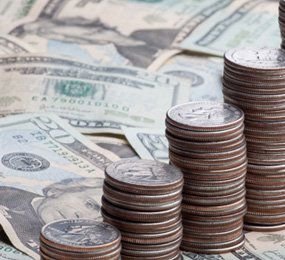:max_bytes(150000):strip_icc():format(jpeg)/bonds-lrg-2-5bfc2b24c9e77c00519a93b5.jpg)
What Is the Glass-Steagall Act?
The Glass-Steagall Act of 1933 forced commercial banks to refrain from investment banking activities to protect depositors from potential losses through stock speculation. Glass-Steagall aimed to prevent a repeat of the 1929 stock market crash and the wave of commercial bank failures.
Signed into law by President Franklin Delano Roosevelt on June 16, 1933, the Act was part of the New Deal and became a permanent measure in 1945. Glass-Steagall was repealed in 1999, although some provisions remain, including the Federal Deposit Insurance Corporation (FDIC), which guarantees individual deposits.
Key Takeaways
- The Glass-Steagall Act was passed in 1933 and separated investment and commercial banking activities in response to involvement in stock market investment.
- Combining commercial and investment banking was considered too risky and speculative and widely considered a culprit that led to the Great Depression.
- Banks were mandated to choose either commercial banking or investment banking activities.
- The Gramm-Leach-Bliley Act eliminated the Glass-Steagall Act’s restrictions against affiliations between commercial and investment banks in 1999, which some argue sparked the 2008 financial crisis.
Provisions of the Glass-Steagall Act
In the pre-Depression era, banks often diverted funds and took risks on speculative investments. The Glass-Steagall Act of 1933 created a regulatory firewall between commercial and investment bank activities. The legislation is named for Senator Carter Glass, a former Treasury secretary and the founder of the United States Federal Reserve System, and Henry Bascom Steagall, a former member of the House of Representatives and chair of the House Banking and Currency Committee. Its provisions include:
- Banks were forced to choose between specializing in commercial or investment banking. Ten percent of a commercial bank’s total income could stem from securities; however, an exception allowed commercial banks to underwrite government-issued bonds.
- An amendment to the Act created the Federal Deposit Insurance Corporation (FDIC).
- The law enabled the Federal Reserve to regulate retail banks,
- Glass-Steagall introduced the Federal Open Market Committee and, ultimately, monetary policy.
- The law encourages banks to use their funds for lending rather than investing those funds in the equity markets.
Effects on the Banking Sector
Financial giants such as JP Morgan and Company were directly targeted by the legislation and forced to cut their services and source of their income. By creating this barrier, the Glass-Steagall Act aimed to prevent the banks’ use of deposits for speculation and prevent failed underwriting.
By the mid-1950s, bank holding companies had surfaced to avoid the restrictions on bank branching or banks with multiple offices. An extension of the Glass-Steagall Act, the Bank Holding Company Act of 1956, defined a “bank holding company” as any company with a 25% stake or more in two or more banks. The 1956 legislation allowed Congress to give the Federal Reserve more oversight over these banks.
The 1999 Repeal and the Gramm-Leach-Bliley Act
The limitations imposed on the banking sector by the Glass-Steagall Act sparked debate over how restrictions are imposed. Many argue that banks that diversify their activities reduce risk to consumers. Some economists believe the law stifled the commercial banking sector until its repeal and prevented economic growth. Others say that it prevented market volatility and aided the prosperity of the post-war years.
In 1999, Congress partially repealed the Glass-Steagall Act. The establishment of the Gramm-Leach-Bliley Act, or the Financial Services Modernization Act, eliminated the Glass-Steagall Act’s restrictions against affiliations between commercial and investment banks. The Federal Deposit Insurance Corporation (FDIC) was not disabled during the repeal of Glass-Steagall.
Financial Crisis After Repeal
Many economists believe that the repeal of Glass-Steagall encouraged speculative and risky activities, including the rise in subprime lending, which led to the 2008 financial crisis. Proponents of the repeal argue that the Glass-Steagall Act was a minor contributor to the financial crisis. Instead, they claim that at the heart of the 2008 crisis was nearly $5 trillion worth of worthless mortgage loans, among other factors.
The repeal of Glass-Steagall was at issue during U.S. Senate Finance Committee hearings after the collapse of Silicon Valley Bank. The 16th largest U.S. bank failed in March 2023, after heavily relying on insured deposits for investment, and the massive withdrawal of deposits led to liquidity problems.
The Federal Reserve intervened following the collapse to improve confidence in the banking system and prevent future failures. This included establishing the Bank Term Funding Program (BTFP), a lending program aimed at providing emergency liquidity to U.S. depository institutions. BTFP ceased making loans on March 11, 2024.
Explain Like I’m Five
The Glass-Steagall Act was a law passed in 1933 to prevent a repeat of the banking crisis of the 1930s. It prohibited commercial banks from doing business as investment banks: They had to choose one or the other. It was intended to prevent banks from using customer deposits to invest in risky assets.
President Clinton repealed the Glass-Steagall Act in 1999, allowing commercial banks to resume investment banking activities. Many economists believe this contributed to the financial crisis of 2008.
What Was the Purpose of the Glass-Steagall Act?
The Glass-Steagall Act was intended to separate investment and commercial banking activities, so that commercial banks would not gamble depositor funds on risky assets. It was established in the wake of the 1929 stock market crash.
Is the Glass-Steagall Act Still in Effect?
No. The Glass-Steagall Act was repealed in 1999, during the Clinton Administration, specifically the provisions that separate commercial and investment banking. Some parts of the law remain, including the FDIC.
Why Was the Glass-Steagall Act Repealed?
The Glass-Steagall Act was repealed in 1999 amid long-standing concern that the limitations it imposed on the banking sector were unhealthy and that allowing banks to diversify would reduce risk.
The Bottom Line
The Glass-Steagall Act prevented commercial banks from speculative risk-taking to avoid repeating the financial crisis experienced during the Great Depression. Banks were limited to earning 10% of their income from investments. The regulation was met with criticism and was repealed in 1999 under President Clinton.

